Wireless Technology Overview:
Find out more about Wireless Technology
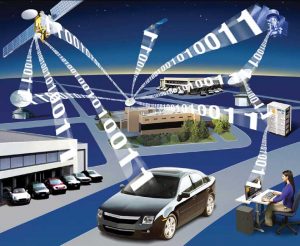 CableFree brings together a diverse range of wireless technologies to form our range of high performance wireless communication products. Our team excels at technical innovation to create ground-breaking & disruptive products.
CableFree brings together a diverse range of wireless technologies to form our range of high performance wireless communication products. Our team excels at technical innovation to create ground-breaking & disruptive products.
These include:
- 4G & 5G LTE Technology
- E-Band Millimeter Wave
- 60GHz V-band MMW
- Microwave
- MIMO OFDM Radio
- Free Space Optics
- WiFi
Here we share some links to helpful content pages on the various popular topics related to Wireless Communications technologies used in the CableFree Product Ranges:
4G/5G/LTE Cellular Broadband Technology
-

CableFree 4G 5G LTE Base Station - 4G/LTE Technology
- Remote Radio Head (RRH) using CPRI interface for 4G & 5G / LTE
- CPRI Front-Haul Technology
- LTE 3GPP Releases Overview
- LTE-Advanced
- LTE Latency
- LTE Frequency Bands & Spectrum Allocations
- LTE UE Category & Class Definitions
- Carrier Aggregation in LTE-A (LTE Advanced)
- Remote Management of CableFree LTE CPEs using TR-069
- RSRP and RSRQ Measurement in LTE
- LTE Carrier Frequency and EARFCN
- Internet of Things (IoT)
Microwave and MMW Technology
-
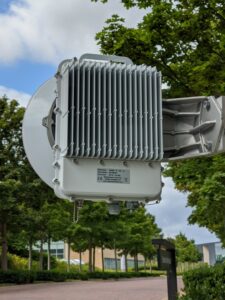
CableFree MMW 10G 40G Millimeter Wave E-Band - E-band MMW Technology
- Licensed Microwave
- ACM: Automatic Coding and Modulation
- Diversity in Microwave Links
- Rain Fade in Microwave Links
- Microwave Frequency Bands
- Low Latency Technology
- XPIC – Cross Polarisation Interference Cancellation
Free Space Optics (FSO) Technology
-
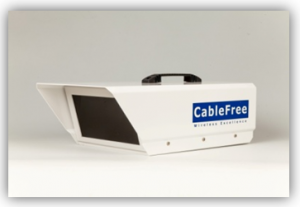
Free Space Optics Technology – FSO - A guide to FSO, Free Space Optics
- FSO and Laser Safety
- ATPC: Automatic Transmit Power Control
- Adaptive Optics in FSO
WiFi and Radio Technology
-
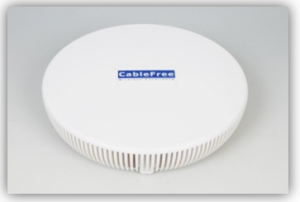
WiFi Technology 802.11ac - OFDM: Orthogonal Frequency Division Multiplexing
- Data Rates and Modulation for 802.11n
- Data Rates and Modulation for 802.11ac
- MIMO (Multiple Input, Multiple Output) Radio
- Comparing OFDMA, OFDM and CDMA
- Software Defined Radio, SDR
- Antenna Technology White Paper
WiFi Technology
WiFi uses radio frequency (RF) waves to enable wireless communication between devices, most commonly connecting Internet routers to devices like computers, tablets, and smartphones. Its versatility also allows connections between any two hardware components, such as IoT devices or printers. Governed by the IEEE 802.11 standards, WiFi operates as a local wireless network, delivering high-speed, flexible connectivity.
Wi-Fi operates on unlicensed 2.4 GHz, 5 GHz, and (with Wi-Fi 6E/7) 6 GHz ISM bands. The 2.4 GHz band offers better range but is prone to interference from Bluetooth, microwave ovens, and cordless phones. The 5 GHz and 6 GHz bands provide higher speeds and less congestion but have shorter ranges. 802.11b/g/n use the 2.4 GHz band, 802.11a/ac/ax use the 5 GHz band (and 6 GHz for ax/ WiFi 6E), and 802.11be (WiFi 7) supports all three bands.
The WiFi Alliance certifies devices as WiFi Certified after rigorous interoperability testing, ensuring compatibility and performance. In the US, WiFi devices require FCC Part 15 certification but no license. The first six channels of 2.4 GHz and 5 GHz overlap with amateur radio bands, requiring careful spectrum management.
Wireless Metropolitan Area Networks (Wi-MAN)
The CableFree range of Wireless Communication Products brings together these diverse technologies to create high speed, reliable and dependable wireless communication networks spanning cities and countries including Wireless Metropolitan Area Networks (Wi-MAN).
Wireless Applications
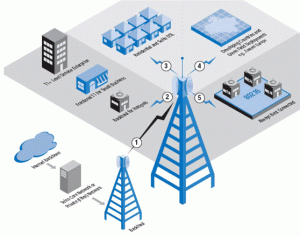 Applications for CableFree Wireless products include:
Applications for CableFree Wireless products include:
- Telecommunications
- Cellular Network Operators (2G, GSM, 3G/UMTS, 4G/LTE)
- Government
- Corporate
- Healthcare
- Education (Schools, Universities)
- Broadcast HDTV Links
- Police Force
- CCTV Security
- Defence
History of Wireless Communications
The first wireless telephone conversation took place in 1880 when Alexander Graham Bell and Charles Sumner Tainter invented the photophone, which transmitted sound using modulated light beams in a primitive version of Free Space Optics (FSO). Though innovative, the device had limited practical use at the time due to its reliance on sunlight, clear weather, and a direct line of sight. Its principles were only applied practically decades later, first in military communications and eventually in fibre-optic technology.
Common Types of Wireless in use today
- Cellular Networks: Provide mobile connectivity for smartphones, tablets, and IoT devices. Modern standards include:
- 4G LTE/LTE-Advanced: Offers high-speed data (up to 1 Gbps) and low latency (10–50 ms), supporting video streaming, VoIP, and mobile gaming.
- 5G: Delivers ultra-low latency (1–10 ms), speeds up to 10 Gbps, and massive device connectivity for applications like autonomous vehicles and smart cities.
- Global Positioning System (GPS): Enables precise location tracking for navigation in vehicles, ships, aircraft, and wearables, using satellite-based radio signals.
- Cordless Computer Peripherals: Includes wireless mice, keyboards, and printers, typically using 2.4 GHz RF or Bluetooth for short-range connectivity to computers.
- Cordless Telephones: Limited-range devices for home or office use, operating on DECT (1.9 GHz) or 2.4 GHz bands, distinct from cellular phones.
- Home Entertainment Controls: Wireless remotes for TVs, streaming devices, and hi-fi systems, often using IR (infrared) or RF (e.g. 2.4 GHz) for control.
- Remote Garage-Door Openers: Operate on RF bands (300–400 MHz), a long-standing consumer wireless application.
- Two-Way Radios: Used in amateur (ham) radio, Citizens Band (CB), marine, and business communications, typically on VHF/UHF bands.
- Baby Monitors: Simplified RF transmitter/receiver systems (e.g. 2.4 GHz) for short-range audio/video monitoring.
- Satellite Television: Delivers hundreds of channels via satellite signals, enabling global access to high-definition content.
- Wireless LANs (Wi-Fi): Based on IEEE 802.11 standards (e.g. Wi-Fi 6/6E, Wi-Fi 7), operates on 2.4 GHz, 5 GHz, and 6 GHz bands, providing high-speed Internet access (up to 46 Gbps with Wi-Fi 7) for homes, offices, and public spaces.
Market for Wireless Technology
The wireless technology market continues to expand rapidly, driven by the rapid uptake of 5G, IoT devices, and consumer electronics. The global wireless technology market is estimated to grow from approximately USD 101 billion in 2025 to over USD 300 billion by 2033. This growth is fuelled by increasing smartphone adoption, investment in infrastructure, and demand for high-speed, low-latency connectivity.
Wireless can be divided into:
- Fixed wireless: The operation of stationary wireless devices or systems, typically in homes, offices, or fixed locations, connected to the internet via specialised modems or access points. It serves as an alternative to broadband, especially in rural areas.
- Mobile wireless: Focuses on wireless systems used in moving vehicles, providing connectivity for passengers and onboard systems. Examples include automotive cell phones, Personal Communications Services (PCS), and vehicle-to-everything (V2X) communication.
- Portable wireless: battery-powered, autonomous devices operated outside fixed locations, homes or vehicles. Examples include handheld cell phones, PCS units, laptops, tablets, wearables, and portable hotspots.
- IR wireless: Uses infrared (IR) radiation for short-range data transmission, suitable for line-of-sight communications and control systems.
Technical Support Portal for CableFree products
Please visit the CableFree Technical Support pages at www.cablefree.net/support which provides in-depth technical information on CableFree products.
For Further Information
Please contact us with any questions on CableFree Wireless Technology.

You must be logged in to post a comment.